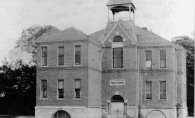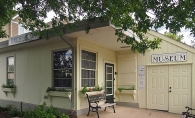Native Americans and early white settlers around Lake Minnetonka knew of the abundant berries, chokecherries, plums and grapes that grew wild along the rich soil of the lake. Still, many considered the subzero winters of the frozen northland of Minnesota to be far too extreme to raise apples, which many settlers assumed belonged back in the old country with the strudels and ciders of Europe. After all, Johnny Appleseed didn’t dare venture this far north.
Reverend Hollister Gideon Pond planted some of the first apple trees in Minnesota when he received a letter full of seeds from friends back in his native New England. Some years later, small sour apples appeared on the trees, to the dismay of hungry settlers around the 1840s or ’50s. The disappointed pioneers resolved to grow wheat rather than apples and Reverend Pond returned to his initial mission: converting the Native Americans to Christianity.
Peter Gideon envisioned himself as a northern Johnny Appleseed as he settled on 160 acres on the bay that soon was named for this intrepid agriculturalist. His friend Robert McGrath tried to discourage this greenhorn from joining the apple biz after Preacher Pond’s debacle, but Gideon couldn’t be swayed. McGrath wrote in his diary about this “apple-crazy man, crazy even to imagine apple trees can stand a frigid climate as this.”
Gideon relied on an apple-obsessed colleague in Bangor, Maine, to send him seeds from that northerly state with similarly chilly winters. Gideon’s original experiments left him with a single crabapple seedling that withstood the cold. He knew that this hardy little sprout would serve to graft scions of preferred, plump apples. By 1862, this tough Russian crab produced a decent orchard of full-fledged apple trees, but the hot, dry summer wiped out every one. He needed a tree that could withstand not only the cold winters but the torrid summers.
Rather than give up on his calling, Gideon scrimped and saved for more apple seeds. “Springtime found Mr. Gideon precariously clad in a suit tailored from two vests and an old pair of trousers, but exuberantly happy as he planted a new orchard,” according to Blanche Nichols Wilson’s Minnetonka Story. With high hopes, he nicknamed his pride after his wife’s first name, the “Wealthy” apple. In less than 20 years, his Wealthy harvest filled the local fruit stands and horticulturalists deemed Gideon’s fruit the best in the Midwest. It earned him the title of “Father of Fruit Breeding in the Midwest” as Minnesota’s premier horticulturalist in 1878.
Eager apple growers heard about this new Minnetonka apple with its ambitious name. A member of the audience at the Minnesota State Horticultural Society asked in the early 1900s, “We have received several orders for the Minnetonka apple. How can we fill them?”
Mr. Philips of the society responded, “If the Minnetonka apple is not a child of the imagination, why in the name of God don’t you make them shop up the apple so outsiders can see them?”
Never mind these skeptics. Not only did the Wealthy live up to its name for dozens of orchards, it also helped spawn the famous Haralson apple from another undaunted horticulturalist: Charles Haralson from Sweden, who grew his fruit at the Minnesota Horticulture Research Center, also known as the Minnesota Landscape Arboretum. Thanks these experimental gardens, dozens of new varieties of fruit fill our cornucopias, including the practically perfect Honeycrisp apple.









